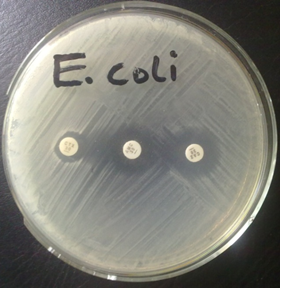There are several classification/types of antibiotics today, which is based on bacterial spectrum of activity (whether broad or narrow) or type of activity exhibited by the agent (whether bactericidal or bacteriostatic). Some antibiotics are also classified based on their chemical structure. And this leaves antibiotics within a particular structural class to have similar patterns of effectiveness, toxicity, and allergic potential. To refresh your memory, some of the different groups of antimicrobial agents used for the treatment of infectious disease in humans shall be highlighted in this section. The types of antibiotics expanded here are not exhaustive of the different classes or types of antibiotics.
- BETA – LACTAM ANTIBIOTICS: The beta – lactam antibiotics are a broad class of antibiotics that consist of all antibiotic agents that contains a beta – lactam ring/nucleus in its molecular structure. They are the oldest class of antibiotics especially the penicillins and they are produced from Penicillium and Cephalosporium bacteria.Examples of antibiotics in this class include: penicillins, cephalosporins, monobactams and carbapenems. The beta – lactam antibiotics work by inhibiting the synthesis of cell wall in bacteria. They are the most widely used group of antibiotics in clinical medicine, and they are active on both Gram positive and Gram negative bacteria. Beta – lactam antibiotics have no antibacterial activity on bacterial cells that lack cell wall e.g. Mycoplasmas. They are only effective on bacterial species that have cell wall.
- MACROLIDES: The macrolides are a group of antibiotics that are characterized by possessing molecular structures that contain large (12-16 membered) lactone rings linked through glycosidic bonds with amino sugars. They are derived from Streptomyces bacteria and they are bacteriostatic, binding with bacterial ribosomes to inhibit protein synthesis. Macrolides are active against most Gram positive bacteria but not against the Enterobacteriaceae. Examples of antibiotics in this category include: erythromycin, azithromycin, and clarithromycin.
- FLUOROQUINOLONES: The fluoroquinolones (fluorinated – quinolones) are second – generationquinolones that are produced by the addition of a fluorine atom (molecule) on the carbon-6 (C-6) of quinolones. They are synthetic antibiotics and are not sourced from microorganisms. Nalidixic acid is the first quinolone while ciprofloxacin, ofloxacin and norfloxacin are examples of fluoroquinolones. They are active on both Gram positive and Gram negative bacteria, and they are mostly used in the treatment of urinary tract infections (UTIs). The fluoroquinolones target the DNA gyrase and topoisomerase IV enzymes of bacterial cell, leading to the inhibition of DNA synthesis or replication in them. Thus, the fluoroquinolones inhibit bacteria by interfering with their ability to make DNA. This activity makes it difficult for bacteria to multiply and cause havoc in vivo. They are used to treat most UTIs, skin infections, and respiratory infections because of their excellent absorption in vivo.
- TETRACYCLINES: The tetracyclines are a group of antibiotics that is characterized by a four cyclic ring. They are derived from a group of Streptomyces bacteria and they inhibit bacterial protein synthesis. Examples include oxytetracycline, doxycycline and chlorotetracycline. Tetracyclines have a wide range of activity on both Gram positive and Gram negative bacteria, thus they are broad spectrum bacteriostatic agent.
- AMINOGLYCOSIDES: Aminoglycoside antibiotics contain amino sugars in their structures and they possess a cyclohexane ring. They are derived from Streptomyces bacteria, and they are bactericidal in action, and they inhibit the synthesis of protein in bacterial cell. Examples of antibiotic in this category include gentamicin, kanamycin, tobramycin and streptomycin.
References
Ashutosh Kar (2008). Pharmaceutical Microbiology, 1st edition. New Age International Publishers: New Delhi, India.
Bisht R., Katiyar A., Singh R and Mittal P (2009). Antibiotic Resistance – A Global Issue of Concern. Asian Journal of Pharmaceutical and Clinical Research, 2 (2):34-39.
Courvalin P, Leclercq R and Rice L.B (2010). Antibiogram. ESKA Publishing, ASM Press, Canada.
Denyer S.P., Hodges N.A and Gorman S.P (2004). Pharmaceutical Microbiology. 7th ed. Blackwell Publishing Company, USA.
Fernandes Prabhavathi (2006). Antibacterial discovery – the failure of success? Nature Biotechnology, 24(12):1.
Finch R.G, Greenwood D, Norrby R and Whitley R (2002). Antibiotic and chemotherapy, 8th edition. Churchill Livingstone, London and Edinburg.
Hart C.A (1998). Antibiotic Resistance: an increasing problem? BMJ, 316:1255-1256.
Discover more from Microbiology Class
Subscribe to get the latest posts sent to your email.





